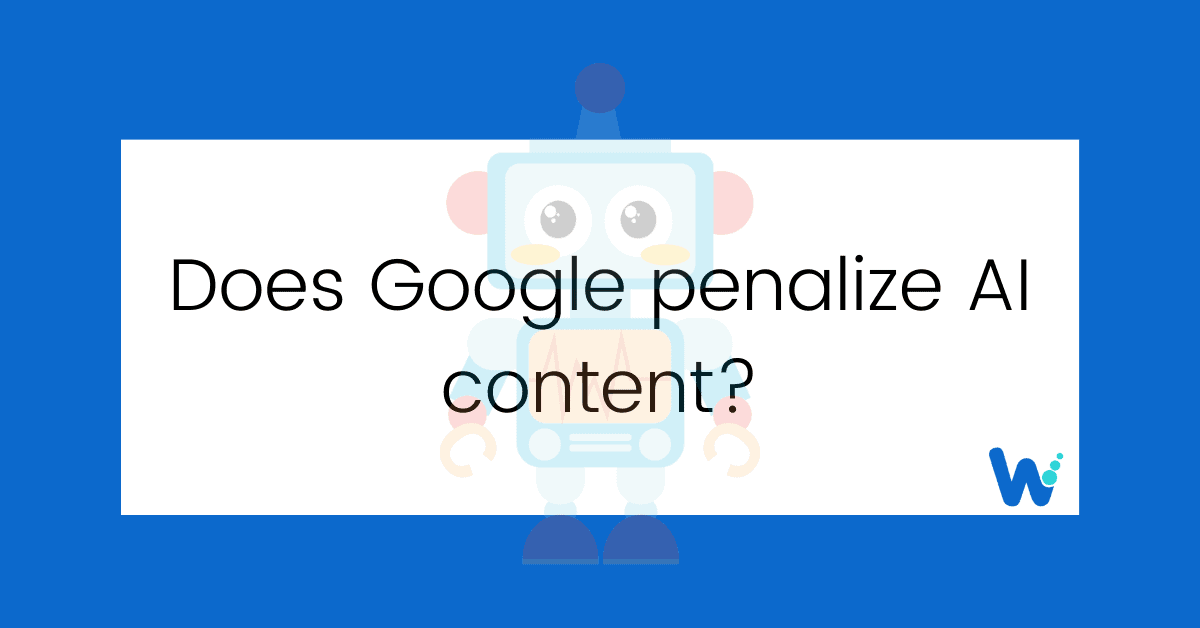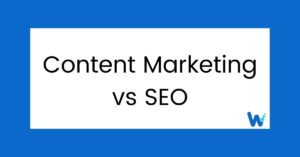With Google’s April 2024 core update, we’ve seen a wave of websites getting deindexed with a common issue—they all used AI-generated content. So, does this mean Google has a bone to pick with AI content? Are they penalizing AI-driven pages? That’s what we’re here to answer.
Let’s explore whether Google is really abandoning AI content and what that means for us as bloggers, SEO experts, and content writers. Stick around as we explore this critical issue!
What does Google say Regarding AI content officially?
Google’s stance on AI-generated content is pretty straightforward: it’s all about the quality.
Google says that it doesn’t matter whether the content is created by humans or by AI; what really matters is how useful, informative, and satisfying that content is for the people who read it.
John Mueller, a Google representative, has said that Google doesn’t specifically target AI-generated content for penalties. The main thing Google looks for is whether the content is helpful and meets users’ needs. If AI-generated content is high-quality and useful, it can rank well in search results, just like content written by humans.
In 2023, Google clarified this point in its guidelines. They mentioned that AI-generated content should meet the same high standards as content created by humans. If content seems like it was made just to rank well in search engines and doesn’t really help users, Google might see it as spam and treat it accordingly.
So, Google’s message is clear: focus on creating content that is genuinely helpful and valuable to users, regardless of whether it’s made by AI or by a person.
AI Content Spam policies for Google search
Google’s spam policies for web search don’t explicitly mention “AI content” by name, but they do address issues that can be relevant to content generated by AI. Here are the key points from Google’s spam policies that could apply to AI-generated content:
- Quality and Added Value: Google emphasizes the importance of having high-quality content that provides real value to users. This implies that AI-generated content should be designed to assist and inform users effectively, not merely to manipulate search rankings.
- Cloaking and Sneaky Redirects: Content shown to search engines must match what is shown to users. AI-generated content should not be designed to deceive either search engines or users about its nature or origins.
- Scraped Content: Google frowns upon sites that publish scraped content, which could include content generated by AI tools that simply rephrase or copy content from other sources without adding significant value.
- Auto-generated Content: While not explicitly banned, Google warns against using automatically generated content that doesn’t help users. If AI is used to generate content, it should be original, useful, and provide a good user experience.
- Keyword Stuffing: Overusing keywords — a common issue with poorly designed AI content — is considered spam. The content must read naturally and be genuinely informative.
- Hidden Text and Links: Using AI to embed hidden text or links within content in ways that users cannot easily see but search engines can is a violation of Google’s policies.
- Misleading Functionality: Google also warns against creating pages that seem to offer useful content or functionality but lead to deceptive or poor-quality experiences. AI-generated pages should accurately reflect the services or information promised without misleading users.
- Scaled Content Abuse: Mass-producing pages using AI tools, especially if they don’t add value to users, can be seen as an abusive practice aimed at manipulating search rankings.
How can Google determine if AI is being used to spam search results?
Google uses a sophisticated AI system known as “SpamBrain” to detect and combat spam in search results, including spam that may be generated by AI. SpamBrain uses a combination of machine learning, pattern recognition, and various quality signals to determine if AI is being used to create spam content. Its goal is to ensure that the content in Google’s search results is useful, reliable, and trustworthy, regardless of whether it’s created by humans or AI.
Here’s how it works in simple terms:
Machine Learning at the Core
SpamBrain is trained on vast amounts of data compiled from the web. This training involves both examples of spam and non-spam content, helping the system learn to differentiate between the two. Unlike static algorithms, SpamBrain continually updates its models based on new data and emerging spam trends. This adaptability helps it stay effective against innovative spam tactics.
Pattern Detection and Anomaly Recognition
SpamBrain is adept at identifying patterns and anomalies in web content that deviate from the norm, which are often indicative of spam. These could include keyword stuffing, hidden text, or unnatural linking patterns. The system understands context and can differentiate between legitimate uses of SEO tactics and manipulative practices that aim to deceive users or game the search engine.
Quality and Relevance Assessment
Google emphasizes quality content. SpamBrain assesses factors like originality, usefulness, readability, and relevance to the query. AI-generated content that lacks depth or context can be flagged. User interaction signals, such as bounce rates and time on site, provide feedback to SpamBrain about the user satisfaction and relevance of the content.
Link Analysis
It examines the patterns and quality of both inbound and outbound links. Links intended to manipulate rankings, or those that form unnatural networks, can trigger SpamBrain’s spam detection protocols. The context and textual content surrounding links are also analyzed to ensure they are relevant and not manipulative.
Handling Spam Reports and Feedback
SpamBrain also uses feedback from users and webmasters. Google’s spam report tools allow individuals to report suspicious sites, which SpamBrain can then analyze and use to improve its detection capabilities. While largely automated, the system’s findings can trigger manual reviews by Google’s team, leading to manual actions against websites if spammy practices are confirmed.
So, Google Penalize AI-Generated Content?
The question of whether Google penalizes AI-generated content directly is nuanced. Google’s primary objective is to ensure that the content it indexes and ranks in its search results is useful, relevant, and provides a good user experience. The focus is not on whether content is generated by AI but rather on its quality and compliance with Google’s guidelines.
Potential Risks with AI-Generated Content
AI-generated content often exhibits certain patterns that can be detected by sophisticated algorithms like SpamBrain. These include unnatural phrasing, repetition, or irrelevant keyword inclusion, which can trigger spam filters.
In cases where AI-generated content is flagged by automated systems, it may undergo a manual review. If the content is found to violate Google’s policies, a manual action may be applied, impacting the content’s visibility in search results.
Google’s algorithms also consider user engagement metrics to gauge content quality. Poorly generated AI content that leads to a bad user experience, like high bounce rates or low engagement, could indirectly affect its rankings.
Best Practices for Using AI in Content Creation
Enhancing Rather Than Replacing: Use AI tools to enhance content creation efforts, not replace them. AI can assist in data analysis, draft creation, and language translation, but the final content should ideally be reviewed and refined by human editors to ensure it meets quality standards.
Disclosure and Transparency: If using AI-generated content, maintaining transparency about its use can be beneficial, especially in sensitive fields like medical, financial, and legal advice, where trust and accuracy are paramount.
Avoiding Over-Optimization: Be cautious of over-optimizing AI-generated content for SEO. Focus on creating genuine, user-centric content rather than content optimized solely for search engines.
Quality Content vs. AI-Generated Content: What’s the Difference?
The main difference lies in the intent and outcome of the content. Quality content, whether created by AI or humans, should provide value to the reader, meet their search intent, and comply with SEO best practices. AI-generated content often faces criticism for lacking depth or personal touch, which are critical for engagement and value.
Can High-Quality AI-Generated Content Rank Well?
Yes, AI-generated content that is well-researched, well-written, and provides genuine value can rank well in Google’s search results. The key is ensuring that the AI tools are used to supplement human creativity and intelligence, not replace it.









